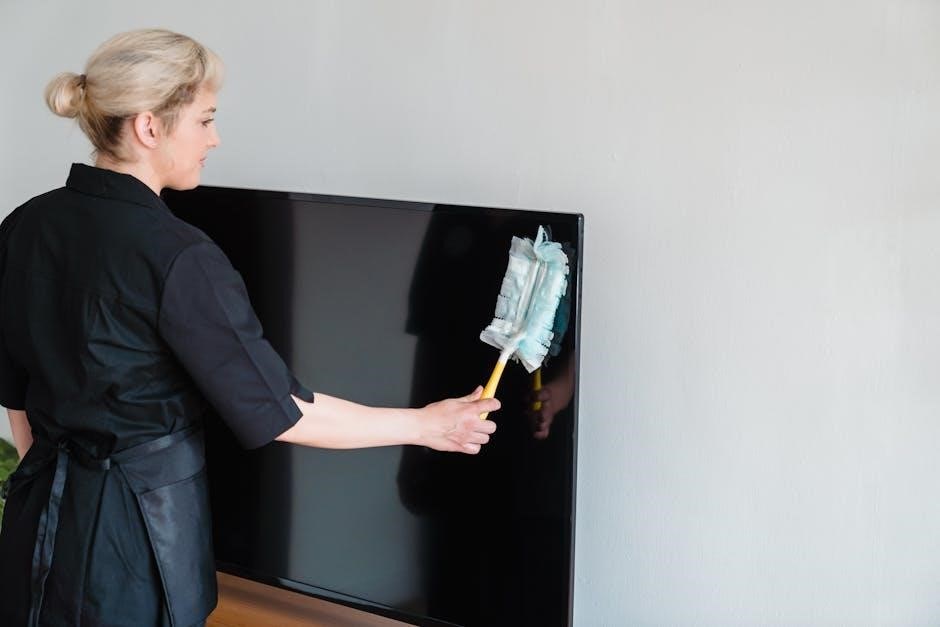Standard O-ring groove dimensions are critical for ensuring proper sealing in various applications. These dimensions vary based on the O-ring’s cross-section, application type, and system pressure. The AS568 standard provides detailed guidelines for groove design, ensuring compatibility and optimal performance. Properly designed grooves prevent extrusion and ensure long-term sealing integrity. The Standard O-Ring Groove Dimensions PDF offers a comprehensive guide for engineers to select and design grooves accurately, covering both static and dynamic applications.
1.1 Importance of O-Ring Groove Dimensions
O-ring groove dimensions are critical for ensuring proper sealing performance. Incorrect dimensions can lead to leakage, extrusion, or premature failure. Properly designed grooves ensure the O-ring functions within its intended pressure and temperature limits. The AS568 standard provides precise guidelines for groove dimensions, helping engineers avoid common pitfalls. Accurate dimensions also extend the service life of the seal and maintain system reliability. By adhering to these standards, designers can optimize material selection and ensure compatibility with various applications, from hydraulic systems to high-pressure environments.
1.2 Overview of O-Ring Groove Design
O-ring groove design involves creating a precision-engineered cavity to house the O-ring, ensuring proper sealing. The groove dimensions, including depth and width, are tailored to the O-ring’s cross-section and application requirements. The AS568 standard provides detailed specifications for groove design, covering both static and dynamic applications. Proper groove design prevents issues like extrusion and ensures optimal sealing performance. Backup rings are often used in high-pressure applications to reinforce the O-ring. Surface finish requirements are also critical, with smoother finishes recommended for static applications and rougher finishes for dynamic ones. Adhering to these design principles ensures reliability and longevity of the seal.
1.3 Purpose of the Standard O-Ring Groove Dimensions PDF
The Standard O-Ring Groove Dimensions PDF serves as a comprehensive guide for engineers and designers, providing precise measurements and specifications for O-ring grooves. It ensures compatibility with various O-ring sizes and materials, adhering to industry standards like AS568. The document covers groove widths, depths, and tolerances for both static and dynamic applications. It also includes best practices for high-pressure and vacuum sealing. By following this guide, professionals can avoid design flaws, prevent extrusion, and ensure optimal sealing performance. The PDF is an essential resource for achieving reliable and long-lasting seals in industrial, aerospace, and chemical applications.

Design Considerations for O-Ring Grooves
Designing O-ring grooves requires careful consideration of application type, pressure limits, and material compatibility. Groove dimensions and tolerances must align with the O-ring’s cross-section and system requirements.
2.1 Static vs. Dynamic Applications
Static and dynamic applications require distinct groove designs. Static seals, like face seals, have fixed surfaces, simplifying groove dimensions. Dynamic seals involve moving parts, demanding precise groove tolerances to prevent O-ring extrusion. Groove depth and width must accommodate the O-ring’s cross-section and system pressure. For dynamic applications, backup rings are often necessary to prevent O-ring failure. Material selection and surface finish also vary between static and dynamic uses. Proper design ensures sealing integrity and longevity, with the AS568 standard providing guidelines for both application types. Understanding these differences is crucial for optimal O-ring performance in any system.
2.2 Pressure and Temperature Limits
Pressure and temperature limits significantly influence O-ring groove design. For pressures above 103.5 Bar (1500 psi), backup rings are essential to prevent O-ring extrusion and ensure sealing integrity. Higher pressures require wider grooves and specific material selections. Temperature limits depend on the O-ring material, with FKM and FFKM offering superior high-temperature resistance. The AS568 standard provides guidelines for groove dimensions under various pressure and temperature conditions. Proper material selection and groove design ensure optimal performance and longevity in extreme environments. Always consult the AS568 standard for specific pressure and temperature limits to avoid material degradation or seal failure.
2.3 Surface Finish Requirements
Surface finish requirements are crucial for ensuring proper O-ring sealing. For static applications, a smoother surface finish (0.1–0.3 µm) is recommended to prevent leakage. Dynamic applications require a slightly rougher finish (0.3–0.5 µm) to accommodate movement without compromising the seal. Improper surface finish can lead to seal failure or premature wear. The AS568 standard provides detailed guidelines for surface roughness, ensuring optimal performance. Proper machining techniques and material selection are essential to achieve the desired finish. Always refer to the AS568 standard for specific surface finish requirements to ensure reliable sealing in both static and dynamic conditions.
2.4 Material Selection for O-Rings
Material selection for O-rings is critical to ensure compatibility with the operating environment. Common materials include FKM (fluorocarbon) for high-temperature and chemical resistance, FFKM (perfluoroelastomer) for extreme chemical and thermal conditions, EPDM for water and steam, and silicone for versatility in temperature extremes. NBR (nitrile) is ideal for hydrocarbon-based applications. The AS568 standard provides guidelines for material compatibility and performance. Proper material selection ensures optimal sealing, durability, and resistance to environmental factors. Always consult the AS568 standard or a material compatibility chart to choose the right O-ring material for your application.

Types of O-Ring Seals
O-ring seals are categorized into face seal, radial seal, and axial seal types. Each type is designed for specific applications, ensuring optimal sealing performance in various environments.
3.1 Face Seal (Flange Seal)
A face seal, or flange seal, is a static sealing application where the O-ring is compressed between two flat surfaces, eliminating gaps. This design is straightforward, with no extrusion concerns. Groove dimensions for face seals are standardized in the AS568 guide, ensuring proper fit and sealing performance. The O-ring sits in a recessed groove, and its compression ensures leak resistance. Surface finish requirements are critical for static applications, typically requiring a smoother finish to prevent leakage. Face seals are widely used in hydraulic and pneumatic systems, offering reliable sealing in non-dynamic environments.
3.2 Radial Seal
A radial seal involves an O-ring seated in a groove perpendicular to the axis of motion, commonly used in dynamic applications like rotating or reciprocating shafts. The gland dimensions must accommodate the O-ring’s cross-section and system pressure. Backup rings are often required in high-pressure applications to prevent extrusion. The AS568 standard provides specific radial seal groove dimensions, ensuring proper fit and function. Surface finish and material selection are critical for durability. Radial seals are widely used in hydraulic cylinders and pneumatic actuators, where reliable sealing is essential for performance and longevity.
3.3 Axial Seal
An axial seal involves an O-ring seated in a groove parallel to the axis of motion, typically used in static applications like flange or face seals. This design eliminates the gap between surfaces, simplifying the groove design and reducing the risk of extrusion. Axial seals are commonly found in applications where there is no movement between the sealed components. The AS568 standard provides specific dimensional guidelines for axial seals, ensuring proper fit and sealing performance. This design is straightforward and effective for applications requiring a reliable, static seal without the complexities of dynamic sealing solutions.

O-Ring Groove Dimensions for Common Applications
Standard O-ring groove dimensions cater to various applications, including hydraulic, pneumatic, high-pressure, and vacuum sealing. The AS568 standard provides detailed charts and guidelines for each application, ensuring optimal performance and reliability in diverse industrial settings.
4.1 Hydraulic Seals
Hydraulic seals require precise O-ring groove dimensions to handle high pressures and dynamic conditions. The AS568 standard provides detailed charts for hydraulic applications, ensuring optimal sealing performance. Groove dimensions must account for factors like pressure, temperature, and fluid type. For pressures above 103.5 Bar (1500 psi), specific groove widths and backup rings are recommended to prevent extrusion. The design guide offers engineering support for custom grooves in materials like FKM and NBR, ensuring reliability in demanding hydraulic systems. Proper groove design extends seal life and maintains system integrity in industrial and aerospace applications.
4.2 Pneumatic Seals
Pneumatic seals involve O-ring groove dimensions tailored for air or gas applications, typically requiring tighter tolerances to prevent leakage. The AS568 standard provides specific guidelines for pneumatic systems, focusing on groove width and depth to ensure proper sealing. Surface finish and material selection are critical, with materials like NBR and FKM being common choices. Backup rings are less frequently used in pneumatic applications but may be necessary for high-pressure scenarios. The Standard O-Ring Groove Dimensions PDF offers detailed charts for pneumatic seals, ensuring optimal performance and reliability in systems with varying pressure requirements.
4.3 High-Pressure Applications
For high-pressure applications, O-ring groove dimensions must be precisely engineered to withstand extreme conditions. Pressures above 103.5 Bar (1500 psi) require specialized groove designs, often involving backup rings to prevent extrusion. The AS568 standard provides specific guidelines for these scenarios, including increased groove widths and depths. Material selection is critical, with high-performance elastomers like FKM and FFKM being preferred. The Standard O-Ring Groove Dimensions PDF includes detailed charts and recommendations for high-pressure seals, ensuring reliability and durability in demanding environments. Proper design and material choice are essential to maintain sealing integrity and prevent failure under stress.
4.4 Vacuum Applications
Vacuum applications require unique O-ring groove designs to maintain sealing integrity under negative pressure. The groove dimensions must account for minimal leakage and prevent gas ingress. Deeper grooves and narrower widths are often recommended to ensure the O-ring remains seated and functional. Materials with low outgassing properties, such as FKM and FFKM, are typically preferred. The AS568 standard provides specific guidelines for vacuum sealing, emphasizing precise tolerances and surface finishes. Proper design ensures reliable performance in vacuum environments, preventing seal failure and maintaining system integrity. The Standard O-Ring Groove Dimensions PDF offers detailed specifications for these specialized applications.

AS568 Standard for O-Ring Groove Dimensions
The AS568 standard provides uniform numbering and dimensional guidelines for O-rings and grooves, ensuring compatibility and optimal sealing performance across various applications. It includes detailed size charts, groove dimensions, and best practices for static and dynamic seals. The standard covers materials like FKM, FFKM, and silicone, offering a comprehensive guide for engineers. The AS568 O-Ring Size Chart PDF is a essential resource for precise groove design, tolerances, and material selection, ensuring reliable sealing solutions in industrial, aerospace, and chemical applications.
5.1 Scope of the AS568 Standard
The AS568 standard establishes a uniform numbering system for O-rings and provides precise dimensional specifications for both O-rings and their corresponding grooves. It covers a wide range of applications, including static and dynamic sealing scenarios, and addresses various materials such as FKM, FFKM, EPDM, and silicone. The standard ensures compatibility between O-rings and groove dimensions, preventing extrusion and ensuring optimal sealing performance. It is widely used in industries like aerospace, chemical, and industrial manufacturing, offering a reliable framework for engineers to design and specify O-ring grooves accurately. The AS568 standard is essential for achieving consistent and reliable sealing solutions.
5.2 Size Chart for AS568 O-Rings
The AS568 size chart provides a comprehensive list of standard O-ring dimensions, including inner diameters, cross-sections, and tolerances. It covers a wide range of sizes to accommodate various applications, from small-scale to industrial uses. The chart is organized by O-ring cross-sections, making it easy to find compatible groove dimensions. Materials like FKM, FFKM, and silicone are included, ensuring versatility for different environments. Engineers use this chart to select the correct O-ring size for their specific needs, ensuring proper fit and sealing performance. The AS568 size chart is a critical resource for designing and specifying O-ring grooves accurately.
5.3 How to Read the AS568 O-Ring Size Chart PDF
The AS568 O-Ring Size Chart PDF is a detailed reference guide that lists standard O-ring dimensions, including inner diameter, cross-section, and tolerances. The chart is organized by cross-sections, making it easy to locate specific O-ring sizes. Each entry includes the nominal dimensions, allowable tolerances, and material options. Engineers can use this chart to match O-ring sizes with groove dimensions for optimal sealing performance. The PDF also provides guidelines for selecting the correct O-ring for specific applications, ensuring compatibility and reliability. It is an essential tool for designing and specifying O-ring grooves accurately.

Metric O-Ring Groove Dimensions
Metric O-ring groove dimensions are standardized for common cross-sections, with and without backup rings, covering static, dynamic, and pneumatic applications. The Metric O-Ring Groove Design PDF provides detailed specifications and best practices for precise engineering.
6.1 Common Metric Cross Sections
Common metric cross sections for O-ring grooves include 1.5mm, 2.0mm, and 3.0mm, widely used in static and dynamic applications. These dimensions ensure proper sealing and durability. The Metric O-Ring Groove Design PDF provides detailed charts for these cross sections, covering both standard and custom applications. Engineers can reference these guidelines to select the appropriate groove dimensions for their specific needs, ensuring compatibility with various materials and operating conditions. Proper sizing is crucial for optimal performance and longevity in hydraulic, pneumatic, and industrial systems.
6.2 Static, Dynamic, and Pneumatic Applications
Metric O-ring groove dimensions vary based on application type. Static applications require simpler groove designs, while dynamic applications demand deeper grooves to accommodate movement. Pneumatic applications often use standard cross-sections but may need adjusted depths for optimal sealing. The Metric O-Ring Groove Design PDF provides detailed specifications for each application, ensuring proper sealing under varying pressures and temperatures. Engineers can reference these guidelines to select the right groove dimensions for their specific use case, whether it’s for industrial, hydraulic, or high-pressure systems. Proper sizing ensures reliability and longevity in all operating conditions.
6.3 Metric O-Ring Groove Design PDF
The Metric O-Ring Groove Design PDF provides detailed dimensional specifications for metric-sized O-rings in static, dynamic, and pneumatic applications. It includes standard cross-sections, groove widths, and depths tailored to specific materials like FKM, FFKM, and EPDM. The guide also covers surface finish requirements and tolerances for optimal sealing performance. Engineers can use this resource to design grooves for high-pressure, vacuum, or industrial applications, ensuring compatibility with international standards. The PDF serves as a comprehensive reference for selecting the right groove dimensions, enabling precise and reliable sealing solutions across various industries.

Backup Rings in O-Ring Groove Design
Backup rings are critical in high-pressure applications to prevent O-ring extrusion. Their dimensions depend on the groove depth, and the groove width must increase with backup ring usage.
7.1 Purpose of Backup Rings
Backup rings are essential in high-pressure applications to prevent O-ring extrusion. They provide additional support, ensuring the O-ring remains seated and functional. Made from rigid materials, backup rings withstand pressure and wear, enhancing seal longevity. Their use is particularly critical in dynamic applications where movement could displace the O-ring. The AS568 standard outlines dimensional requirements for backup rings, ensuring compatibility with groove designs. Properly sized backup rings maintain sealing integrity and prevent system failure. Engineers often refer to the Standard O-Ring Groove Dimensions PDF for guidance on selecting and installing backup rings in various sealing configurations.
7.2 Dimensional Requirements for Backup Rings
Backup rings must meet specific dimensional requirements to ensure proper fit and function within O-ring grooves. Their dimensions are typically determined by the groove depth and width, with the AS568 standard providing detailed size charts. The backup ring’s inner diameter should match the O-ring groove’s diameter, while its thickness is selected based on the application’s pressure requirements. Proper dimensional alignment prevents extrusion and ensures sealing integrity. The Standard O-Ring Groove Dimensions PDF outlines these requirements, helping engineers select the correct backup rings for various applications, including high-pressure and dynamic sealing scenarios.

Tolerances for O-Ring Grooves
Tolerances for O-ring grooves are critical for ensuring proper sealing; Static applications require tighter tolerances, while dynamic applications allow slightly more flexibility. The AS568 standard provides specific guidelines for groove tolerances, ensuring optimal performance and preventing leakage. Properly maintained tolerances enhance sealing integrity and extend the lifespan of the O-ring. The Standard O-Ring Groove Dimensions PDF offers detailed charts and specifications for achieving precise tolerances in various applications.
8.1 General Tolerances for Static Seals
For static seals, general tolerances are critical to ensure proper O-ring seating and sealing performance. The AS568 standard provides specific guidelines for groove dimensions, with tolerances typically ranging between 0.00/-0.08 for diametral dimensions and 0.10/-0.00 for radial dimensions. Surface finish requirements are also specified to prevent leakage. Proper tolerances ensure the O-ring fits snugly without excessive compression, which could lead to premature wear or extrusion. The Standard O-Ring Groove Dimensions PDF outlines these tolerances in detail, ensuring engineers can design grooves that meet the demands of static sealing applications effectively.
8.2 Tolerances for Dynamic Applications
Tolerances for dynamic applications are more stringent due to the movement and stress on the O-ring. The AS568 standard recommends tighter dimensional tolerances to accommodate the motion without compromising the seal. Groove widths and depths must be precisely controlled to prevent excessive wear or extrusion. For pressures above 103.5 Bar (1500 psi), backup rings are often required, and groove dimensions must be adjusted accordingly. The Standard O-Ring Groove Dimensions PDF provides detailed charts and guidelines for dynamic seals, ensuring optimal performance and longevity in demanding environments. Proper tolerances are essential to maintain sealing integrity under motion.

Surface Finish Requirements for Grooves
Surface finish requirements for grooves ensure optimal sealing performance. Static grooves typically require a smoother finish (0.1-0.3 µm), while dynamic grooves may allow a slightly rougher finish (0.3-0.5 µm). The AS568 standard provides detailed guidelines for surface roughness to prevent leakage and ensure longevity of the seal. Proper surface finish is critical for maintaining sealing integrity in both static and dynamic applications.
9.1 Surface Roughness for Static Grooves
Surface roughness for static grooves is critical to ensure proper sealing. A smoother finish, typically in the range of 0.1 to 0.3 µm, is recommended for static applications. This ensures minimal leakage and optimal contact between the O-ring and the groove. The AS568 standard provides specific guidelines for surface roughness, emphasizing the importance of a polished finish to prevent seal failure. Proper surface preparation enhances the longevity of the seal and maintains integrity under static conditions. Adhering to these standards ensures reliable performance in various industrial and hydraulic applications.
9.2 Surface Roughness for Dynamic Grooves
Surface roughness for dynamic grooves requires careful consideration to minimize wear and ensure optimal sealing performance. A surface roughness range of 0.2 to 0.5 µm is typically recommended for dynamic applications. This finish helps reduce friction and prevents excessive wear on the O-ring during movement. The AS568 standard provides detailed guidelines for dynamic groove surface roughness, emphasizing the importance of a controlled finish to maintain seal integrity. Proper surface preparation is crucial to prevent heat buildup and ensure long-term reliability in demanding environments. Adhering to these standards ensures consistent performance and extends the lifespan of the sealing system.

Engineering Guide for O-Ring Groove Design
The engineering guide provides best practices for designing O-ring grooves, including material selection, application-specific designs, and tolerances to ensure optimal sealing performance across various industries.
10.1 Best Practices for Groove Design
Best practices for groove design emphasize adherence to standard dimensions, material compatibility, and application-specific requirements. Ensure proper surface finish for static and dynamic seals, as rough surfaces can compromise sealing integrity. For high-pressure applications, consult design charts to determine appropriate groove widths and backup ring usage. Material selection should align with the O-ring elastomer to prevent incompatibility. Always refer to the AS568 standard or equivalent guides for precise measurements and tolerances. Engineering support is recommended for custom designs, especially in critical industries like aerospace or chemical processing. Proper groove design ensures optimal performance, longevity, and reliability of the seal.
10.2 Engineering Support for Custom Grooves
Engineering support for custom grooves is essential for complex or non-standard applications. Experienced engineers can provide tailored solutions, ensuring optimal performance and compatibility with specific materials like FFKM, FKM, or silicone. Custom groove designs often require precise tolerances and surface finishes, which are detailed in the Standard O-Ring Groove Dimensions PDF. For industries like aerospace or chemical processing, expert guidance ensures compliance with stringent requirements. By leveraging this support, designers can address unique challenges, such as high-pressure or vacuum sealing, while maintaining reliability and longevity of the seal.
O-Ring Groove Dimensions for Specific Materials
Standard O-ring groove dimensions vary by material, ensuring compatibility and performance. The PDF guide provides specific charts for FKM, FFKM, EPDM, silicone, and NBR, optimizing seal integrity.
11.1 FKM (Fluorocarbon) O-Rings
FKM O-rings are ideal for high-temperature and chemical-resistant applications. The Standard O-Ring Groove Dimensions PDF provides specific charts for FKM materials, ensuring proper groove design. These dimensions account for the O-ring’s cross-section and application type, whether static or dynamic. The guide includes tolerances and surface finish requirements to optimize sealing performance. Engineers can reference these standards to design grooves that prevent extrusion and ensure long-term durability. The PDF also offers best practices for FKM O-ring installation in various industries, including aerospace and chemical processing, supported by detailed engineering specifications.
11.2 FFKM (Perfluoroelastomer) O-Rings
FFKM O-rings are designed for extreme chemical and thermal environments, offering superior resistance to aggressive media. The Standard O-Ring Groove Dimensions PDF provides specific guidelines for FFKM materials, ensuring precise groove design. These dimensions account for the O-ring’s cross-section and application requirements, with a focus on high-temperature and chemical resistance. The PDF includes charts for groove widths and depths, as well as tolerances and surface finish recommendations. FFKM O-rings are commonly used in aerospace, semiconductor, and chemical industries, where extreme conditions demand high-performance sealing solutions. Proper groove design ensures long-term sealing integrity and prevents premature failure in critical applications.
11.3 EPDM and Silicone O-Rings
EPDM and Silicone O-rings are widely used for their excellent resistance to temperature, UV, and outdoor exposure. The Standard O-Ring Groove Dimensions PDF provides specific guidelines for these materials, ensuring proper groove design. EPDM O-rings excel in water, steam, and certain chemicals, while Silicone O-rings are ideal for high-temperature applications and vibration resistance. The PDF includes detailed charts for groove dimensions, tolerances, and surface finish requirements. These materials are commonly used in automotive, industrial, and food processing applications. Proper groove design ensures optimal sealing performance and durability, making them a reliable choice for diverse environments and operating conditions.
11.4 NBR (Nitrile) O-Rings
NBR (Nitrile) O-rings are widely used for their excellent resistance to oils, fuels, and hydraulic fluids. The Standard O-Ring Groove Dimensions PDF provides specific guidelines for NBR O-rings, ensuring proper groove design. These O-rings are ideal for applications involving petroleum-based products and operate effectively in temperatures ranging from -40°C to 120°C. The PDF includes detailed charts for groove dimensions, tolerances, and material compatibility. NBR O-rings are commonly used in hydraulic and pneumatic systems, offering a cost-effective solution for sealing in harsh environments. Proper groove design ensures optimal sealing performance and durability, making NBR O-rings a versatile choice for industrial applications.
The Standard O-Ring Groove Dimensions PDF serves as a comprehensive guide for engineers and designers, providing detailed specifications for optimal sealing performance. By adhering to these standards, professionals can ensure compatibility, durability, and reliability in various applications. The guide covers materials like NBR, FKM, and EPDM, offering tailored solutions for different environments. Proper groove design, as outlined in the PDF, minimizes the risk of failure and enhances system efficiency. This resource is indispensable for anyone working with O-rings, ensuring precise and effective sealing solutions across industries.
